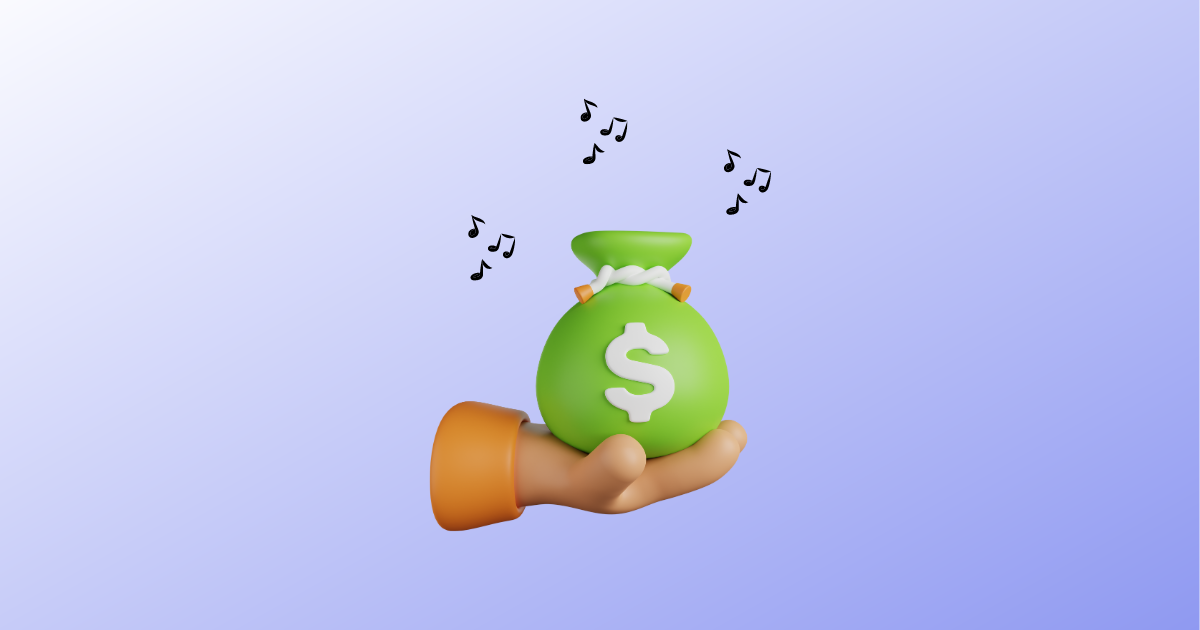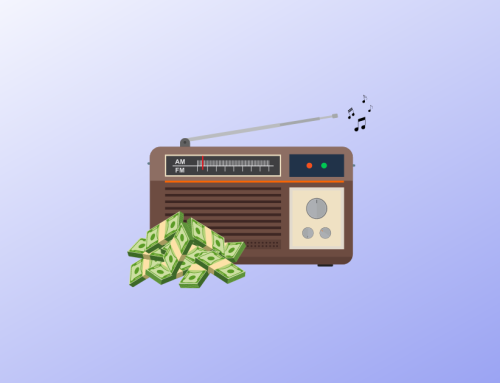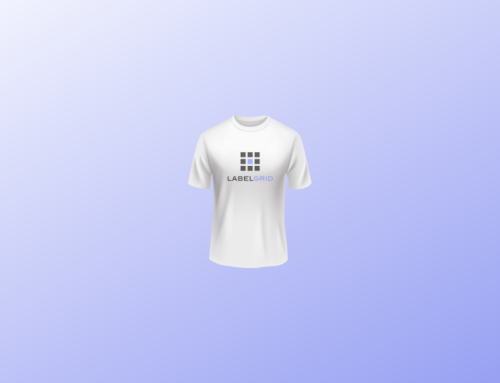Spotify is crowded, and finding new income streams is more important than ever for musicians. With traditional revenue sources becoming increasingly unpredictable, it’s essential to diversify your income. From leveraging digital platforms to exploring unconventional avenues, we’re digging into 5 innovative ways you can boost your revenue. This guide is tailored to help you think deeper and unlock new opportunities to grow your income. Let’s explore these strategies together and ensure your talent doesn’t just shine but also pays off.
Sell Merchandise
Selling merchandise is not just about band t-shirts and caps; it’s about creating a brand that fans want to be part of. As a record label owner, you have a unique opportunity to help your artists diversify their income by tapping into the merchandise market. Let’s jump into how you can maximize this opportunity.
Create Unique Merchandise
The key to successful merchandise sales lies in offering products that are as unique as the artist’s music. Fans love to show their support with items that stand out and resonate with the music they adore. Think beyond the usual offerings and explore merchandise that reflects the artist’s style and message. Here are a few ideas to get started:
- Limited edition items: Offer products available for a short time or in a limited quantity to create a sense of urgency.
- Custom artwork: Collaborate with artists to create custom designs that capture the essence of your musician’s brand.
- Eco-friendly options: With increasing demand for sustainable products, consider offering eco-friendly or recycled materials merchandise.
Use Online Platforms
Online platforms have become a vital part of the merchandise selling strategy. They offer a global reach and simplify buying and selling merchandise for artists and fans. Here’s how to make the most out of these platforms:
- E-commerce integration: Ensure your artist’s website has an integrated e-commerce platform, allowing fans to purchase merchandise directly.
- Social media: Use social media to promote new merchandise, share behind-the-scenes content of the creation process, and engage with fans.
- Online marketplaces: Explore popular marketplaces like Etsy or eBay to reach a wider audience beyond the artist’s fan base.
Through creative merchandise design and effective use of online platforms, you can open up new revenue streams for your artists and deepen their connection with fans. Remember, successful merchandise sales boost income and enhance brand visibility and fan loyalty.
Offer Online Music Lessons
Offering online music lessons is a fantastic way for musicians to generate extra revenue. It allows them to share their skills and passion for music with a broader audience and provides a flexible and convenient income stream. Let’s investigate how you can capitalize on this opportunity effectively.
Promote Expertise
First and foremost, your selling point is your expertise. Whether you specialize in guitar, piano, vocals, Logic Pro, or any other instrument, you must communicate your skills and experience to potential students. Create a compelling profile highlighting your musical background, achievements, and any formal qualifications. Students seek a teacher who can guide them effectively, so showcasing your expertise is crucial.
Use Social Media and Websites: Promote your lessons using your social media platforms and personal website. Posting clips of your performances, student testimonials, and engaging content related to music education can attract attention and validate your proficiency.
Offer Sample Lessons: Consider offering a free or discounted introductory lesson. This allows potential students to experience your teaching style firsthand and see the value in your lessons.
Provide Flexible Scheduling
Flexibility is vital when it comes to online music lessons. You’re not just competing with local music teachers; you’re now accessible to students from all over the globe. Here’s how you can stand out by offering flexible scheduling options:
- Adopt an Easy Booking System: Use online scheduling tools that allow students to easily book lessons at times that work for both of you. Ensure your availability is visible and updated regularly to avoid double bookings or scheduling conflicts.
- Offer Various Lesson Durations: Not every student wants or can commit to a full hour. Providing a range of lesson lengths, such as 30-minute, 45-minute, and 60-minute options, can cater to different needs and schedules.
- Be Mindful of Time Zones: It’s vital to be flexible and accommodating when teaching students in different time zones. Make it clear where you’re based and try to offer slots that could work across different regions whenever possible.
Incorporating online music lessons into your revenue streams expands your reach and strengthens your connection with fans and budding musicians globally. By promoting your expertise and offering flexible scheduling, you’ll be well on your way to building a successful online teaching business that complements your music career.
Live Stream Performances
Live Streaming Performances are a game-changer for musicians looking to beef up their income streams. Whether you’re a solo act or part of a band, broadcasting your performances online opens up endless possibilities to connect with fans and monetize your talent. Let’s explore how you can make the most of live streaming.
Monetize Live Streams
Turning your live stream performances into a revenue source requires some strategy, but it’s well within your reach. Here are some proven methods to monetize your online gigs:
- Pay-Per-View or Ticket Sales: Platforms like StageIt allow you to easily set up ticketed events. Fans pay to access your live stream, like attending a physical concert.
- Fan Donations and Tips: Use platforms like Twitch or YouTube Live, which offer built-in features for fans to donate directly during your performance. This adds an interactive element and allows your audience to show their appreciation in real time.
- Subscription Services: Consider offering a subscription model through platforms like Patreon. Fans can subscribe for exclusive access to your live streams, behind-the-scenes content, and more.
- Merchandise Sales: Your live stream isn’t just about the music. It’s an opportunity to promote and sell your branded merchandise. Platforms like Shopify can integrate into your streaming page, allowing viewers to buy without missing a beat.
Each method has its merit, and the best choice depends on your audience size, genre, and how engaged your fans are. Experiment with different options to determine what works best for you and your music.
Engage with Audience
Your ability to engage with your audience during live streams can make or break your success. Here are a few tips to amplify your online presence and keep viewers glued to their screens:
- Interact During the Show: Read and respond to comments in real time. This direct engagement makes fans feel valued and part of the experience.
- Request Line: Let viewers request songs. It not only increases engagement but also personalizes the performance.
- Behind-the-Scenes Content: Share stories or show behind-the-scenes footage between songs. It adds a layer of intimacy to the experience.
- Quality Streaming: Ensure your audio and video quality is top-notch or the best you can afford. Investing in a good microphone and camera can significantly enhance the viewing experience.
Live streams offer a unique opportunity to build that connection by letting fans into your world personally and directly.
By incorporating live stream performances into your portfolio, you’re not just showcasing your talent; you’re building a community around your music. Your digital community is your most valuable asset. So, grab your instrument, turn on that camera, and share your music with the world like never before.
Collaborate with Brands
One powerful method is brand collaborations. Let’s explore how you can unlock this potential.
Find Relevant Partnerships
The first step is identifying brands that align with the musician’s image, genre, and audience. It’s essential to pursue partnerships that make sense for both parties. Here’s how you start:
- Research brands that share a similar demographic as the musician’s fan base. For instance, a pop artist might mesh well with fashion or tech companies, while a country musician could look towards outdoor brands.
- Use social media to gauge interest. Posting about particular products or brands and noting the response can be a preliminary test of what might resonate with your audience.
- Leverage existing contacts. Networking is key in the music industry. Use your contacts to introduce you to potential brand partners.
Choosing the right brand for a partnership ensures authenticity, which fans can sense and appreciate.
Negotiate Sponsorship Deals
After finding a suitable brand partner, the next step is negotiating a deal that benefits both sides. Here are pivotal points to consider:
- Define the partnership terms clearly. Specify what each party is responsible for, including expectations about social media posts, public appearances, and merchandise use.
- Discuss financials openly. Sponsorship deals range from product supplies to significant financial backing for tours or album releases. Understanding the worth you bring to the table is crucial.
- Seek long-term relationships rather than one-off deals. A continuous partnership provides sustained revenue and builds a stronger association between the musician and the brand in the eyes of fans.
Engaging with brands offers musicians a lucrative way to supplement their income while fostering relationships that could benefit their careers in the long term. By finding the right partners and negotiating thoughtful deals, musicians can enhance their revenue and add a new dimension to their professional portfolio.
Create and Sell Music Samples
In an industry where creativity meets business, selling music samples is a lucrative avenue for musicians looking to boost their income. This strategy isn’t just about creating bits of music; it’s about crafting sounds that can transform a track. Let’s learn how to produce high-quality samples and efficiently market them to your target audience.
Produce High-Quality Samples
The first step in selling music samples is ensuring they’re of the highest quality. This doesn’t necessarily mean you need the most expensive equipment, but you should use what you have to its fullest potential. Here are a few pointers:
- Focus on uniqueness: Your samples should offer something different. Whether it’s an unusual sound, a rare instrument, or a unique production technique, make your samples stand out.
- Clean recording is essential: Background noise is a no-go. Use a good microphone and record in a quiet space to ensure your samples are crisp and clear.
- Versatility matters: Create samples in various tempos, keys, and styles. This will showcase your versatility as an artist and widen your potential market.
- Metadata is crucial. Tag your samples with relevant metadata (BPM, key, mood). This will help potential buyers find what they’re looking for.
Market to Target Audience
Creating fantastic music samples is just half the battle; the other is getting them in front of the right people. Here’s how you can effectively market your samples:
- Know your audience: Are you targeting hip-hop producers? Indie filmmakers? Video game developers? Understanding who your samples appeal to will guide your marketing efforts.
- Leverage social media: Platforms like Instagram, Twitter, and TikTok can be powerful tools for showcasing your work. Use hashtags, engage with your community, and share snippets of your samples in action.
- Build a user-friendly website: Your website is your storefront. Make sure it’s easy to navigate, offers secure payment options, and clearly presents your samples with short, enticing previews.
- Network: Use forums, attend industry events, and engage with producer communities online. Building relationships can lead to collaborations and more sales.
Focusing on quality and effectively targeting your audience can turn your music samples into a significant revenue stream. Remember, it’s not just about the music—it’s about presenting your work in the best light and connecting with the right people.



